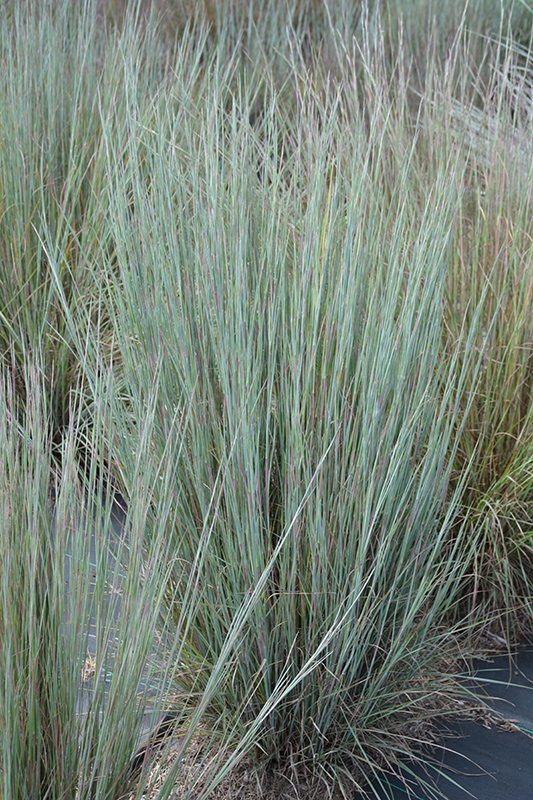Prairie Blues Bluestem
Schizachyrium scoparium 'Prairie Blues'
Height: 4 feet
Spread: 24 inches
Sunlight:
![]()
Hardiness Zone: 3a
Other Names: Little Bluestem
Description:
An improved variety for hot, dry areas with consistent gray-blue, ribbon-like foliage that takes on hues of violet-purple in fall; silvery white seed heads persist well into winter; an outstanding accent plant
Ornamental Features
Prairie Blues Bluestem is primarily grown for its highly ornamental fruit. The silver seed heads are carried on showy plumes displayed in abundance from early fall to late winter. Its attractive grassy leaves are silvery blue in color. As an added bonus, the foliage turns a gorgeous violet in the fall. It has masses of beautiful spikes of purple flowers rising above the foliage in late summer, which are most effective when planted in groupings.
Landscape Attributes
Prairie Blues Bluestem is an herbaceous perennial grass with an upright spreading habit of growth. It brings an extremely fine and delicate texture to the garden composition and should be used to full effect.
This is a relatively low maintenance plant, and is best cut back to the ground in late winter before active growth resumes. It has no significant negative characteristics.
Prairie Blues Bluestem is recommended for the following landscape applications;
- Mass Planting
- General Garden Use
- Groundcover
Planting & Growing
Prairie Blues Bluestem will grow to be about 3 feet tall at maturity, with a spread of 24 inches. It grows at a medium rate, and under ideal conditions can be expected to live for approximately 10 years. As an herbaceous perennial, this plant will usually die back to the crown each winter, and will regrow from the base each spring. Be careful not to disturb the crown in late winter when it may not be readily seen!
This plant should only be grown in full sunlight. It is very adaptable to both dry and moist locations, and should do just fine under typical garden conditions. It is considered to be drought-tolerant, and thus makes an ideal choice for a low-water garden or xeriscape application. It is not particular as to soil type or pH. It is somewhat tolerant of urban pollution. This is a selection of a native North American species. It can be propagated by division; however, as a cultivated variety, be aware that it may be subject to certain restrictions or prohibitions on propagation.

